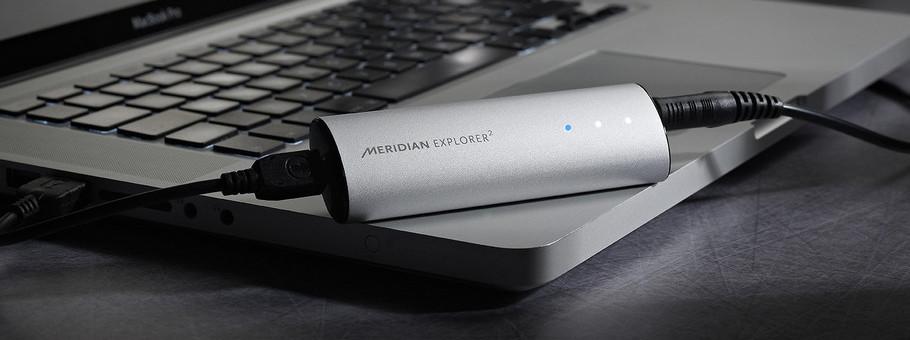Originally published on Electronic House.
Music quality is back in a big way. Gone are the days of audiophiles being the only people who could truly appreciate music the way it was intended to sound from the engineers and artists. Today, thanks to advancements in technology, everyone has the potential to be a “digital audiophile.” So what specifically does a music enthusiast need in terms of hardware to get from being a casual listener to an audiophile listener who can recognize and enjoy the subtle nuances of music in their collection?
Many people know that uncompressed digital audio is of better quality than compressed digital audio, and now more than ever there are places to find the content in true studio master quality. The next step is finding a place to store this content and figuring out how to play it back so that none of the quality is lost. The answer: Invest in a NAS (Network-Attached Storage) device and a DAC (Digital-to-Analog Converter).
The DAC: Essential for High-Res Audio Listening
A DAC is a must for anyone who truly appreciates content delivered as it was intended to be heard. Utilizing a DAC may be very different than the audio setup you are already familiar with. A DAC is not really an audio source, nor is it an output device or a pre-processor. A DAC converts digital content to an analog format for playback on a home stereo system. The quality of the conversion process differs by the quality of the DAC. While some newer audio/video receivers like Sony’s ES line and Yamaha’s Aventage line boast high-quality internal DACs, this is not the case for most other products with built-in DACs.
Here’s what happens when you use a lower quality DAC: Audio recorded on a CD is 16-bit, 44.1kHz, which is one of the common specs found in most products with an internal DAC. This would be the required quality to play back a digital copy of a CD without any degradation. However, this quality is still not on par with the audio as it was originally engineered and mastered. To get to this level, you would need a DAC capable of converting 24-bit, 192kHz audio to an analog format. A higher quality DAC takes the zeros and ones of an uncompressed audio file like a FLAC and converts it into an electrical format that can be received unaltered.
Bottom line: Make sure that the standalone DAC, DAC/amplifier combo, or A/V receiver with a built-in DAC is able to handle 24-bit, 92kHz audio files. Keep in mind that if you already own a great amplifier and a digital audio player, and can already play back audio files that are FLAC, ALAC, and the common lossless WAV, you can get a standalone DAC that will take that great content and hand it off to your amp.
OUR RECOMMENDATIONS:
- NAD D1050 DAC
- Marantz HD-DAC1 Headphone Amplifier with DAC Mode
- Marantz NA6005 Network Audio Player & USB DAC
- Meridian Explorer2 Portable USB DAC
The NAS: A Simple, Safe Music Storage Solution
Now that you understand how to boost the fidelity of your music, you’ll want to store all of that great content somewhere. Consider putting your music on a NAS device. This $500-ish hard drive typically comes with 2 to 4 terabytes of storage space (4 TB is usually enough for music storage, but you can always add more space for about $100 per TB) and attaches to your home’s wireless or wired network. Sure, many people use their PCs and smartphones to hold music, but hi-res audio can eat up a lot of space on these devices and requires that you turn them on every time you want to listen to music, unlike a NAS device.
A NAS device is also less prone to viruses, damage, and corruption; plus content stored on it is easy to access and maintain. Almost all NAS devices can be configured by following a menu-based setup procedure available on disc or the manufacturer’s website. After the setup is complete, you can access music on the NAS device from any PC or mobile device on your network, and stream the content (via wire or wirelessly) for playback on any high-res audio component you want–preferably one that can handle high-res music formats.
Keep in mind that you can use a NAS device to store more than just music. Photos, videos, movies, and backup computer files can be put on a NAS device for safekeeping. To handle a variety of multimedia and support streaming to more than one audio component, opt for NAS device with at least 4 GB of RAM.
On your journey to musical nirvana, be sure to put a DAC and NAS device on your shopping list. They will not only improve the way you hear your musical content but also simplify the setup and maintenance of great-quality audio.
With more than a decade of experience in home systems installation and product development, Joe Whitaker currently is principal of the integration firm The Thoughtful Home in St. Louis, Mo. He was elected to the CEDIA board of directors in 2013 and is a frequent contributor to CE Pro magazine. You can contact him at Joe@thethoughtfulhome.com

